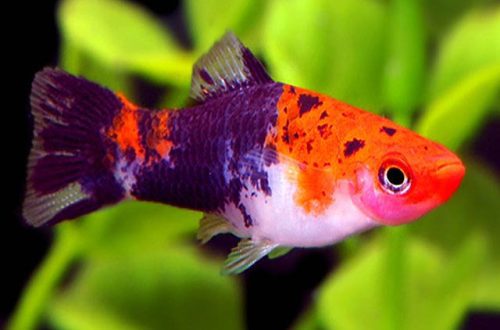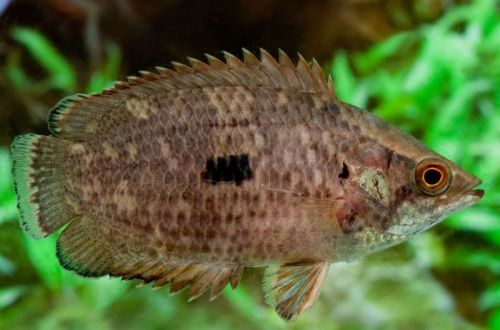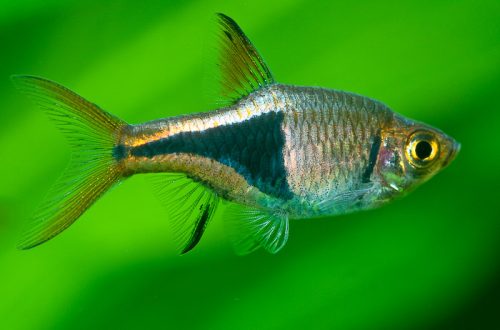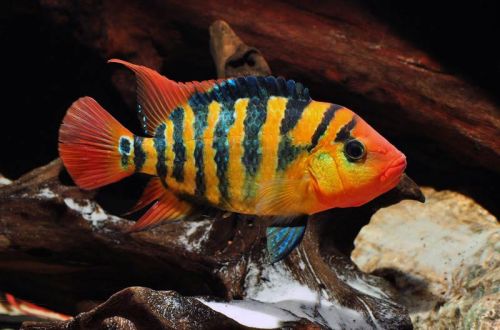
Cyclasoma Festa
Festa Cichlazoma, Orange Cichlid or Red Terror Cichlid, scientific name Mesoheros festae, belongs to the Cichlidae family. Previously, it had a different classification and was referred to as Cichlasoma festae. A bright beautiful fish and very warlike, fully justifying one of its popular names. It is often kept alone in the species aquarium due to its temperament. Keeping can be described as moderately difficult, if there is not sufficient finance, the fish requires high quality water and a predominantly protein diet.

Contents
Habitat
It comes from South America from the territory of modern Ecuador and northern Peru. It occurs in various biotopes, but as a rule, these are rivers flowing into the Pacific Ocean and their tributaries. This species was introduced to Southeast Asia, where it successfully took root, making serious competition to local species.
Brief information:
- The volume of the aquarium – from 300 liters.
- Temperature – 25-29°C
- Value pH — 6.0–8.0
- Water hardness – soft to medium hard (5-18 dGH)
- Substrate type – sandy
- Lighting – subdued
- Brackish water – no
- Water movement – light or moderate
- The size of the fish is 12–20 cm.
- Food – meat food
- Temperament – aggressive
- Keeping alone or in a formed male/female pair
Description
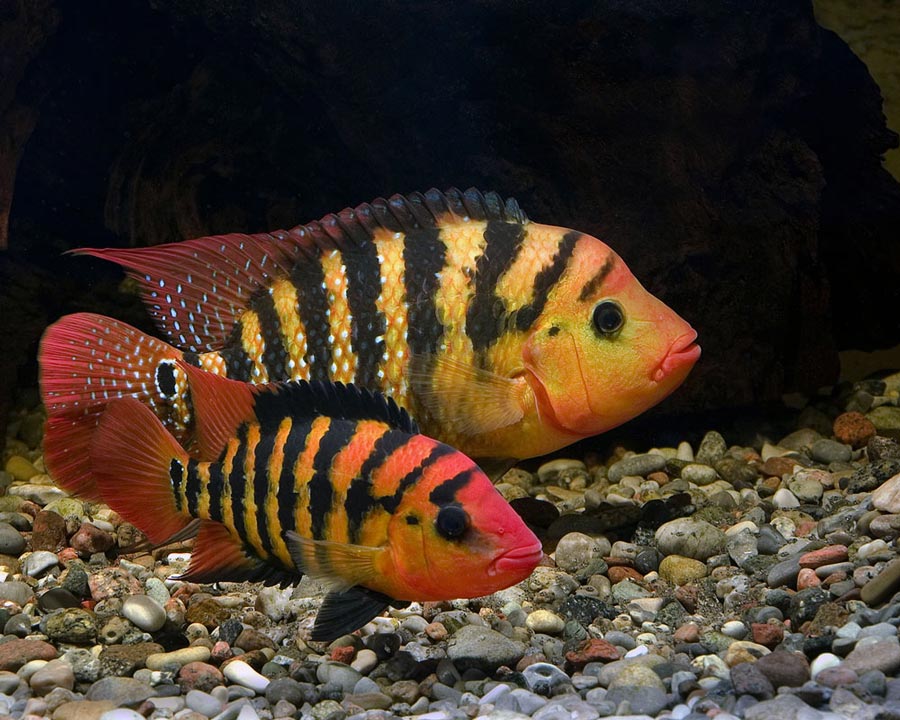
Adult males reach a length of up to 20 cm, females are noticeably smaller, only 12 cm. The coloration consists of alternating bright orange and black vertical stripes with uneven edges. The dorsal and anal fins are colored in dark colors, turning into red. There are also white specks in the body pattern. Depending on the region of origin, the coloration may be dominated by a greenish tint instead of orange.
Food
In nature, it feeds on benthic crustaceans, worms, small fish, fry, as well as plant debris (fallen fruit, seeds). In a home aquarium, the basis of the diet should be meat products in freeze-dried, live or frozen form (bloodworm, earthworms, etc.). It is worth giving preference to special feeds for carnivorous cichlids, produced by many manufacturers.
Behavior and Compatibility
Territorial and aggressive species, fully confirming one of its names – “Red Terror”. Joint keeping is possible only with strong fish of similar and larger size. The rest of the smaller neighbors will be subjected to constant persecution, or eaten. Cichlazoma Festa is no less militant with its relatives, so it is advisable to keep only one adult or a mature male / female pair.
It is worth noting that pairs are formed as the fish mature when kept in a large group, future partners choose each other only for reasons known to them and maintain relationships for a long time. The probability of creating a pair by simply adding a male and a female together is practically zero. The only thing that can be achieved in this way is the death of one of the fish due to constant attacks from the other.
Maintenance and care
Due to the unfriendly temperament, the size of the aquarium should be selected based on how many fish are planned to be kept. For one orange cichlazoma, a tank of 250-300 liters is enough. If neighbors are assumed, then the volume should be increased to at least 600 liters. The design combines free areas for swimming and places for shelters in the form of snags or other decorative items. The fish is prone to damaging plants when digging in the ground, so live, rooted vegetation will not take root. But you can use floating plants, mosses and ferns growing on snags, or artificial plantations.
The fish originate from flowing waters and are susceptible to the accumulation of organic waste, which they themselves produce in large quantities due to a meat diet. To maintain high water quality, you will need to install a productive filter with effective biological filtration, as well as weekly change part of the water (20–30% of the volume) with fresh water and regularly clean the substrate.
Breeding / breeding
The main problem with breeding Cichlazoma Festa is the search for a suitable pair, if it is not formed, then contributing to its creation in adult fish is an unpromising task. Another problem arises if the fish are kept in a community aquarium. During the mating season, Cichlomas become incredibly ferocious and even large neighbors cannot avoid attacks, so a separate spawning aquarium will be required.
Otherwise, the breeding process is quite simple and does not require recreating special conditions (hydrochemical composition of water, diet changes, etc.). Cichlids lay eggs in reliable shelters, for example, imitation of a cave, grotto. The incubation period lasts 3-4 days, the fry that appear then move to a spawning hole dug at the bottom. Over the coming weeks, parents will vigilantly monitor and protect their offspring.
Fish diseases
The main cause of most diseases is unsuitable living conditions and poor-quality food. If the first symptoms are detected, you should check the water parameters and the presence of high concentrations of hazardous substances (ammonia, nitrites, nitrates, etc.), if necessary, bring the indicators back to normal and only then proceed with treatment. Read more about symptoms and treatments in the Aquarium Fish Diseases section.



